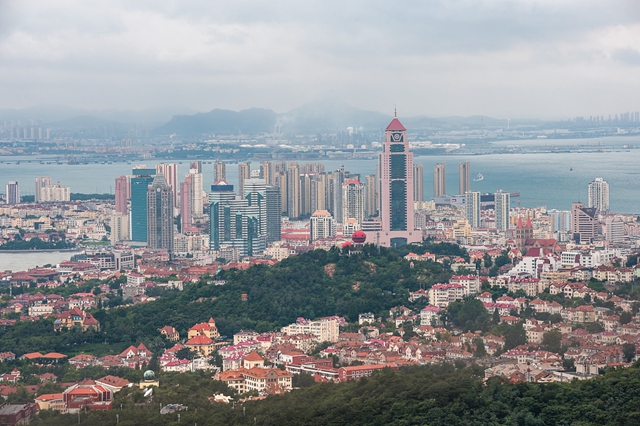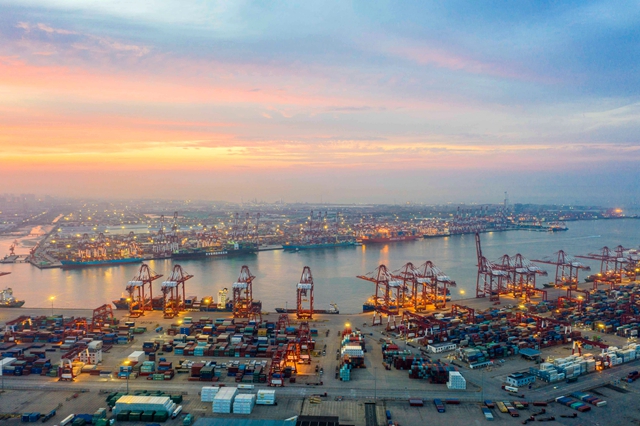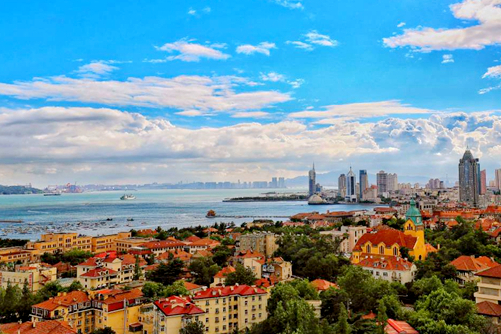Qingdao's GDP rises 4.1% in Q1-3

Qingdao boasts a vibrant economy. [Photo/VCG]
In the first three quarters of 2022, the eastern coastal city of Qingdao's GDP reached 1.1 trillion yuan ($151.69 billion), up 4.1 percent year-on-year in constant prices, 1.1 percentage points and 0.1 percentage points higher than the national and provincial levels, respectively.
According to official statistics, the added value of the primary industry in the city rose 1.7 percent to 34.61 billion yuan. The added value of the secondary industry stood at 382.08 billion yuan, up 3.5 percent, while the figure of tertiary industry reached 685.72 billion yuan, up 4.5 percent.
During this period, Qingdao overcame the adverse impact of the COVID-19 pandemic and other unexpected factors, with main economic indicators showing a steady growth trend, which demonstrated the strong resilience of the city's economy, said officials from the municipal statistics bureau.
In the first three quarters of this year, the city's fixed asset investment rose 4.1 percent year-on-year. Driven by the urban renewal projects, infrastructure investment continued to gain momentum, growing by 15.9 percent and maintaining double-digit growth for four consecutive months.

Qingdao Port, Shandong province [Photo/VCG]
Guided by the strategy of revitalizing the real economy, investment in key areas increased steadily, with investment in equipment manufacturing and strategic emerging industries up 19.3 percent and 12.6 percent, respectively.
Over this period, Qingdao's total import and export value increased by 7.5 percent year-on-year to 665.41 billion yuan, accounting for 27.2 percent of Shandong's total figure. Among the 15 sub-provincial cities in China, Qingdao's foreign trade volume ranked fifth after Shenzhen, Ningbo, Guangzhou and Xiamen.
A total of 311,700 new urban jobs were created during this period. The number of registered unemployed in urban areas was 67,700, down 20.8 percent year-on-year, which was the lowest in nearly five years.









 Play
Play  Play
Play